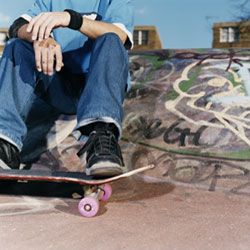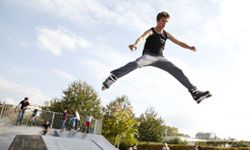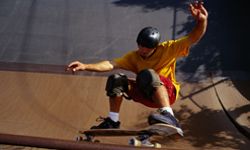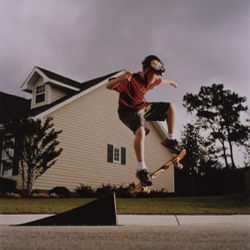Skate parks are man-made dreamscapes for skateboarders, inline skaters and freestyle BMX bikers. Skate parks are loaded with ramps, grinding rails, benches and boxes where freestyle athletes learn new tricks and hone their skills. Many cities and smaller towns build public skate parks as free and safe recreation spots for both young and old.
Despite the extreme nature of the sport, skate parks are surprisingly safe. Sadly, there are hundreds of skating- and biking-related fatalities every year, but almost none of them occur at skate parks. That's because most fatal skating and biking accidents involve cars striking riders on the street [source: Waters]. If your town doesn't have a public skate park, but you want your kids to have a safe place to ride, maybe it's time to build your own.
Advertisement
Skateboarding has always had a do-it-yourself ethos. The very first skateboards were cobbled together by off-season surfers from wooden boxes and roller skate wheels back in the 1950s [source: Hamm]. Even as boards have modernized, skaters everywhere build their own ramps and obstacles out of wood, metal sheets, mounds of dirt, and whatever they can find. In fact, skate parks are really a constructed version of street skating, which uses existing obstacles and components -- like curbs, benches, staircases and railings -- as the foundation for tricks.
A quick survey of YouTube videos proves the ingenuity of backyard skate park builders. You could be one of them. Keep reading to follow our 10 steps to building a backyard skate park. Step one: Call your insurance agent.





